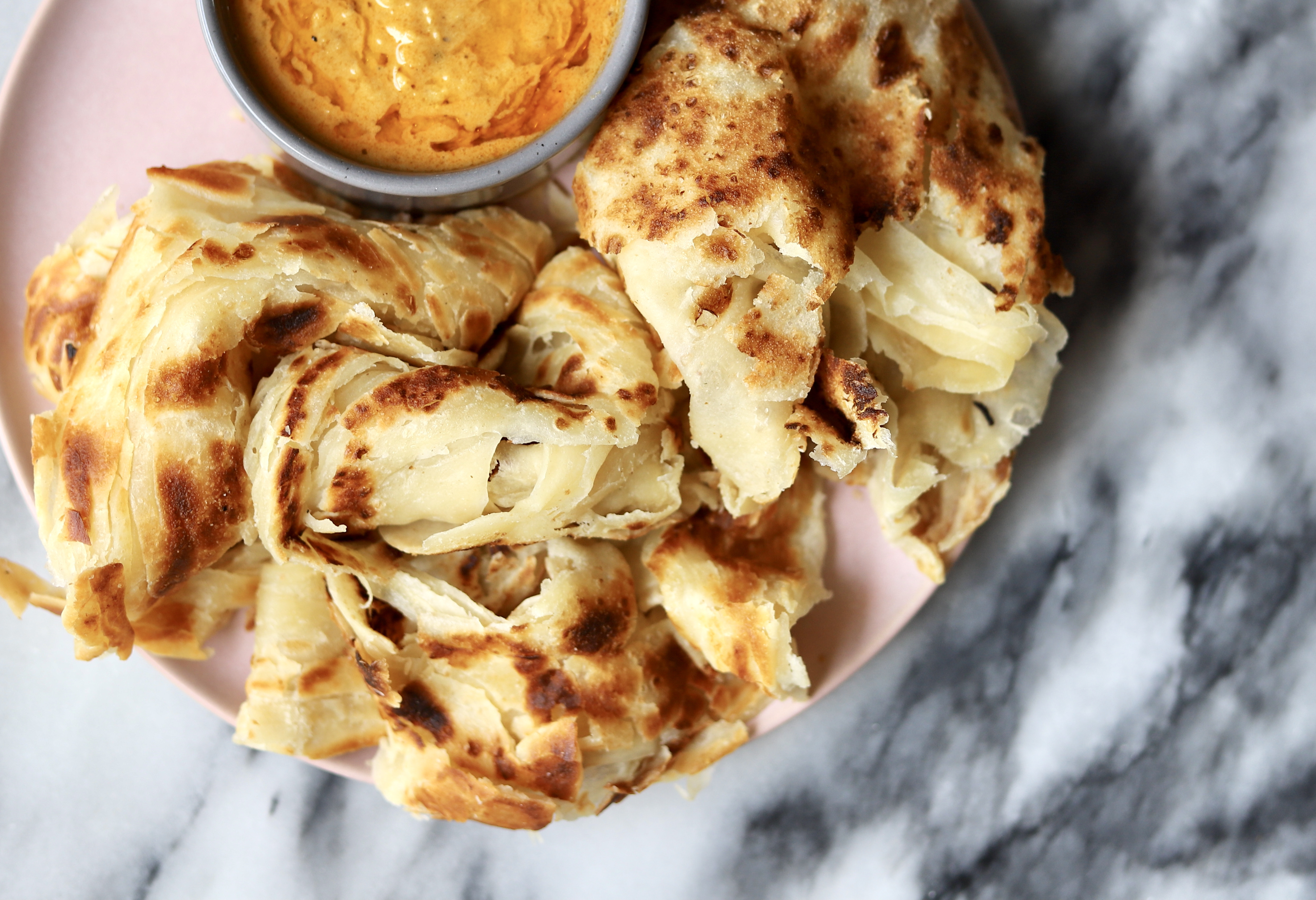Roti Canai! This roti recipe is by Sheldon Lynn of Sheldo’s Kitchen, though I used a different method of folding the translucent thin dough to get the final product. Sheldo Roti Canai is sometimes called Roti Paratha or Roti Prata and is a very popular flat bread in Malaysia.

Roti Canai
Roti Canai s a flat bread that originated from originated from Southern India. It is also found in other countries in Southeast Asia like in Indonesia Singapore, Thailand, and Brunei. It is absolutely delicious with coconut curry based dishes and dipping sauces. It is buttery, flaky, slightly sweet because of the added condensed milk and it is slightly crispy.
Ingredients
Method
- In a bowl mix together water, condensed milk, butter or ghee, salt, and sugar.
- Mix together with wooden spoon till combined and add your flour.
- Mix until all flour is moistened, if there are dry spots, add up to 1 tablespoon of water.
- Knead until combined for about 30 seconds, cover with a kitchen towel and let rest for 20 minutes so dough hydrates and gluten relaxes and becomes the dough becomes more manageable.
- After 20 minutes, knead your dough until smooth which should take anywhere from 30 seconds to 2 minutes.
- Divide your dough into 10 pieces, they should weight about 100 grams each if you have a kitchen scale.
- Round your pieces into balls, and arrange on an oiled baking tray. Make sure to generously coat the balls as well when you place them on the baking sheet.
- cover with plastic wrap and let rest at room temperature for 3 hours.
- After 3 hours, take each ball and stretch on a clean, oiled kitchen counter into a large translucent thin sheet by rolling and stretching, spreading oil on the surface to help stretch and to help form layers. You can spread ghee on the translucent sheet instead of oil if you would like. When your stretch your dough out, make sure to avoid having thick dough around your edge, so go around to smooth this out. Additionally, it is okay if while stretching your dough tears a bit, just keep going.
- Take the translucent dough sheet and spread oil over it. Bring the sheet together, lengthwise to form a long pleated rope. Gently pull to stretch it even more and roll the rope in a spiral to form a small pleated spiral ball and set aside. Think of the swirl of a snail’s shell.
- Add more oil to your work surface and repeat with other balls and set aside.
- Right before you are ready to cook each roti, roll out the ball to form a flat circle. It is okay if it has some spaces long the spirals of the roti ball (spaced in the flat, rolled out circle).
- When ready to fry, in a non-stick skillet or frying pan over medium add 2-3 tablespoons of ghee or oil to the pan and when the ghee is simmering, place in roti in the pan ad cook until golden brown on one side and flip to cook until golden brown on the other side.
- It may puff up and in that case press down with a spatula.
- If you used oil, in the last 30 seconds of cooking your roti, add a tiny bit of butter to the pan to give it that buttery flavour that ghee would typically add. You cannot add butter early because butter burns faster compared to oil and ghee.
- Place roti on a clean tea towel and allow to cool slightly, 30 seconds using tea bowl to protect your hands, vigorously clap the roti between two hands until your roti is fluffed up and flaky.
- Serve your roti hot with curry your of choice like a Red Lentil Coconut Curry.












